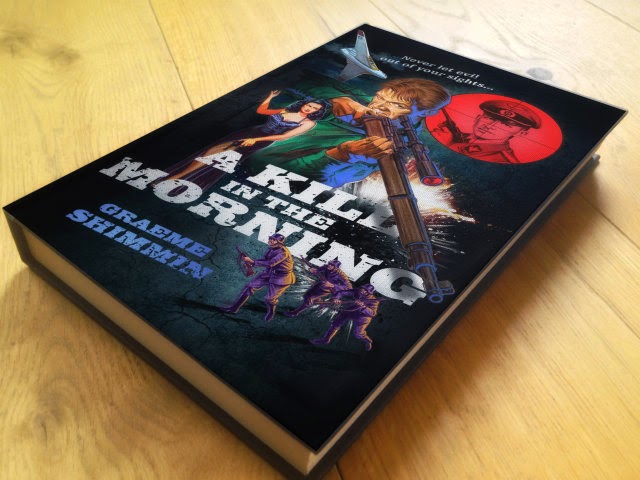If you’re a writer with a novel coming out, then you are probably wondering how to build awareness and excitement about it.
One of your main pre-publication publicity opportunities is the ‘cover reveal’ – where you show your most enthusiastic followers what the novel is going to look like.
In this article I’ll share a few ideas about how I made the most of the cover reveal, and how to avoid it being a failure.
What’s the point of a cover reveal?
Like all your marketing efforts, the point of revealing the cover is to build awareness of it. A second positive effect is if you manage to convert some of that interest into pre-orders.
The cover reveal for my own novel A Kill in the Morning was successful - gaining hundreds of retweets and Facebook shares and resulting in pre-orders.
How not to do it
Some authors just take the cover image supplied by their publisher (or designed themselves) and plonk it on Facebook with a note saying 'here's my cover'.
That's not very inspiring.
The fine line between under and over exposure
Given the amount of times I’ve written about A Kill in the Morning, I’m still amazed how many people say to me, ‘Oh have you written a book?’
It just shows how much of marketing is about repetition.
You need to remind people and remind them again and again, until eventually it sinks in. That means you have to keep coming up with new things to say.
Timing
I revealed the cover about a month before A Kill in the Morning came out, which seemed about right, the novel was already available for pre-orders on Amazon, so people who were interested based on the cover could place an order. Still, I'm not sure the timing of the cover reveal is as critical as revealing it with some panache.
Teasers
As part of this strategy of reminding people multiple times, instead of just revealing the cover I produced some teasers first.
First, one based on the tag line for the novel:
Second: two based on elements of the cover. One of which was this aircraft:
After three teasers, I thought it was time for the big reveal.
Behind the Scenes
Again, in order to make my reveal more interesting, I came up with a different angle.
People like to see inside the process, so I wrote an article about my book cover design process and included some of the concept art and trial cover sketches.
For example, here's the "mood board":
I also explained the cover design process and how an author can go through the process - whether they have a publisher and artist involved or are doing it themselves.
Because the post contains useful advice it gets steady hits on my website and continues to create awareness. To me that's better than just "revealing the cover".
You can see the article here: Book Cover Design: How to Make a Book Cover
Publicising your cover
Of course the main places are Facebook and Twitter, but there are lots of other possibilities. I got thousands of hits from StumbleUpon too and genre websites and Goodreads are also good. It might even be possible to publicise your cover reveal in local newspapers.
Action points
- Think of as many angles as possible to keep promoting your book without boring your audience.
- Decide when you will do your cover reveal.
- Design some teasers.
- Think of an angle for your cover reveal.
- Make a list of places you can publicise your cover.
The year is 1955 and something is very wrong with the world. It is fourteen years since Churchill died and the Second World War ended. In occupied Europe, Britain fights a cold war against a nuclear-armed Nazi Germany. In Berlin the Gestapo is on the trail of a beautiful young resistance fighter, and the head of the SS is plotting to dispose of an ailing Adolf Hitler and restart the war against Britain and her empire. Meanwhile, in a secret bunker hidden deep beneath the German countryside, scientists are experimenting with a force far beyond their understanding. Into this arena steps a nameless British assassin, on the run from a sinister cabal within his own government, and planning a private war against the Nazis. And now the fate of the world rests on a single kill in the morning…You can read the opening of the published novel here:
.











.jpg)

